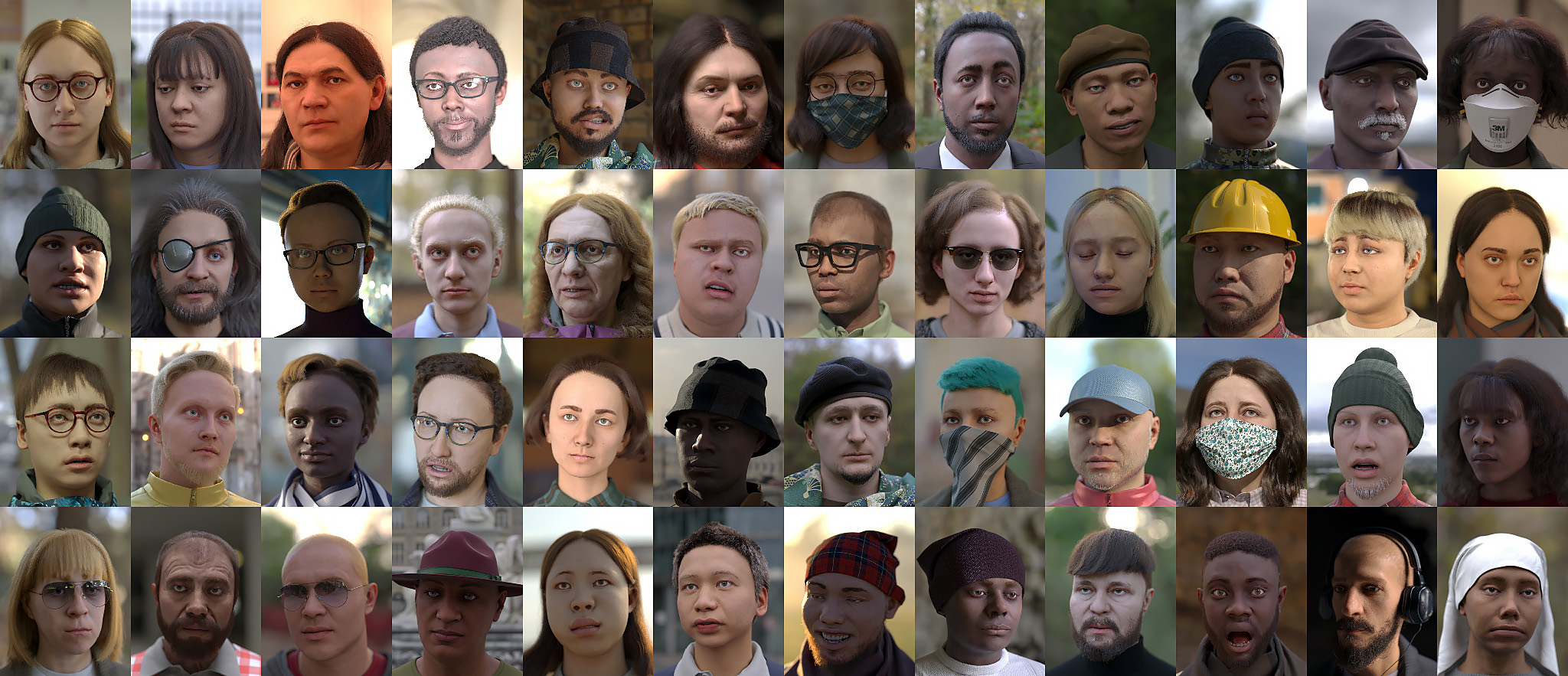Face Segmentation in Foundry Nuke: Machine Learning for Advanced VFX
Introduction
In VFX compositing, precise face segmentation is essential for tasks like digital makeup, de-aging, and CGI facial replacements. Traditional tracking and rotoscoping methods can be tedious, but with machine learning (ML), we can automate face segmentation with incredible accuracy.
This article explores:
✅ How Machine Learning (ML) enables face segmentation in Nuke
✅ How synthetic data bridges the domain gap in training AI models
✅ The potential applications of face segmentation in VFX workflows
✅ Microsoft’s synthetic face dataset and how to use it for training models
Why Face Segmentation is Important in VFX Compositing
Challenges in Traditional Face Tracking & Rotoscoping
Before ML-powered segmentation, artists relied on:
- Manual Rotoscoping – Time-consuming and prone to errors.
- Point-Based Tracking – Struggles with occlusions and rapid motion.
- Planar Tracking – Works for flat surfaces but fails on complex facial movements.
Solution: Machine Learning Face SegmentationBy training AI models with large datasets, we can automatically segment faces into multiple regions, identifying eyes, nose, lips, jawline, and skin separately.

How Machine Learning Enables Face Segmentation in Nuke
Understanding Face Segmentation with Neural Networks
Face segmentation in Foundry Nuke relies on deep learning models that recognize facial features using pixel-wise classification. This means each pixel is assigned a class label (e.g., “eye,” “skin,” “lips”).
To train these models, we use synthetic datasets, like Microsoft’s 100,000 synthetic face dataset, which provides:
✅ 2D landmark detection for precise tracking.
✅ Per-pixel segmentation labels for facial features.
✅ Diverse face types to improve generalization.
Solution: Machine Learning Face SegmentationBy training AI models with large datasets, we can automatically segment faces into multiple regions, identifying eyes, nose, lips, jawline, and skin separately.

How Microsoft Uses Synthetic Data for Face Segmentation
Bridging the Domain Gap: Synthetic vs. Real Data
One of the biggest challenges in AI training is the domain gap—the difference between synthetic and real-world data. Microsoft’s research shows that it’s possible to train face segmentation models using only synthetic data without significant accuracy loss.
How They Achieved This:
- Procedurally Generated 3D Face Models – Thousands of variations in shape, expression, and lighting.
- Hand-Crafted Asset Libraries – High-quality skin textures, hair, and occlusion elements.
- Domain Adaptation Techniques – Blending real-world and synthetic datasets for better generalization.
Applying ML-Based Face Segmentation in Nuke
Step 1: Load a Pre-Trained Face Segmentation Model
- Use CopyCat (Nuke’s built-in ML training tool) or import a pre-trained PyTorch/TensorFlow model.
- Ensure the dataset matches your target footage’s lighting and resolution.
Step 2: Run the Segmentation Model on Footage
- Apply the trained model to detect and classify different facial regions.
- Adjust threshold settings for fine-tuning segmentation accuracy.
Step 3: Refine the Output in Nuke
- Use Blur and Erode nodes to soften edges and remove artifacts.
- Apply custom masks for manual tweaks if necessary.
Practical Uses of Face Segmentation in VFX
✅ Digital Makeup & Beauty Retouching – Apply skin smoothing, highlight eyes, or change lip colors dynamically.
✅ De-Aging & Face Replacement – Improve deepfake quality by blending CGI face elements seamlessly.
✅ Stylized Effects – Convert faces into cartoon or cyberpunk-style renderings dynamically.
Pro Tip: Combine ML segmentation with SmartVectors for motion-tracked facial effects in Nuke.
Common Mistakes in ML-Based Face Segmentation
🚨 Mistake 1: Not Using Diverse Training Data
Fix: Train your model with various skin tones, lighting conditions, and facial expressions.
🚨 Mistake 2: Over-Reliance on AI Without Manual Tweaks
Fix: Always manually refine masks when necessary.
🚨 Mistake 3: Using Low-Resolution Training Data
Fix: Higher-resolution datasets improve segmentation accuracy.
Conclusion: The Future of AI-Powered Face Segmentation in Nuke
Machine learning is revolutionizing VFX workflows, and face segmentation is just the beginning. By leveraging synthetic datasets and neural networks, we can:
✅ Automate complex facial tracking with pixel-level precision.
✅ Reduce manual rotoscoping time by up to 80%.
✅ Enhance photorealism in CGI facial replacements.
Next Steps:
- Explore Microsoft’s synthetic face dataset for training your own models.
- Experiment with CopyCat ML tools in Nuke.
- Stay updated for the upcoming release of this face segmentation tool!
Want more AI-powered VFX tutorials? Stay tuned for future updates!
FAQ: ML-Based Face Segmentation in VFX
1. How does face segmentation work in Nuke?
A deep learning model assigns labels to facial pixels, identifying eyes, lips, skin, and other regions for precise tracking.
2. Can I train my own segmentation model in Nuke?
Yes! Use CopyCat to train custom ML models based on your specific dataset.
3. What’s the advantage of synthetic data for AI training?
Synthetic datasets eliminate the need for manual labeling, making AI training faster, cheaper, and more scalable.
4. Where can I download Microsoft’s synthetic face dataset?
The dataset is available for non-commercial research on GitHub.